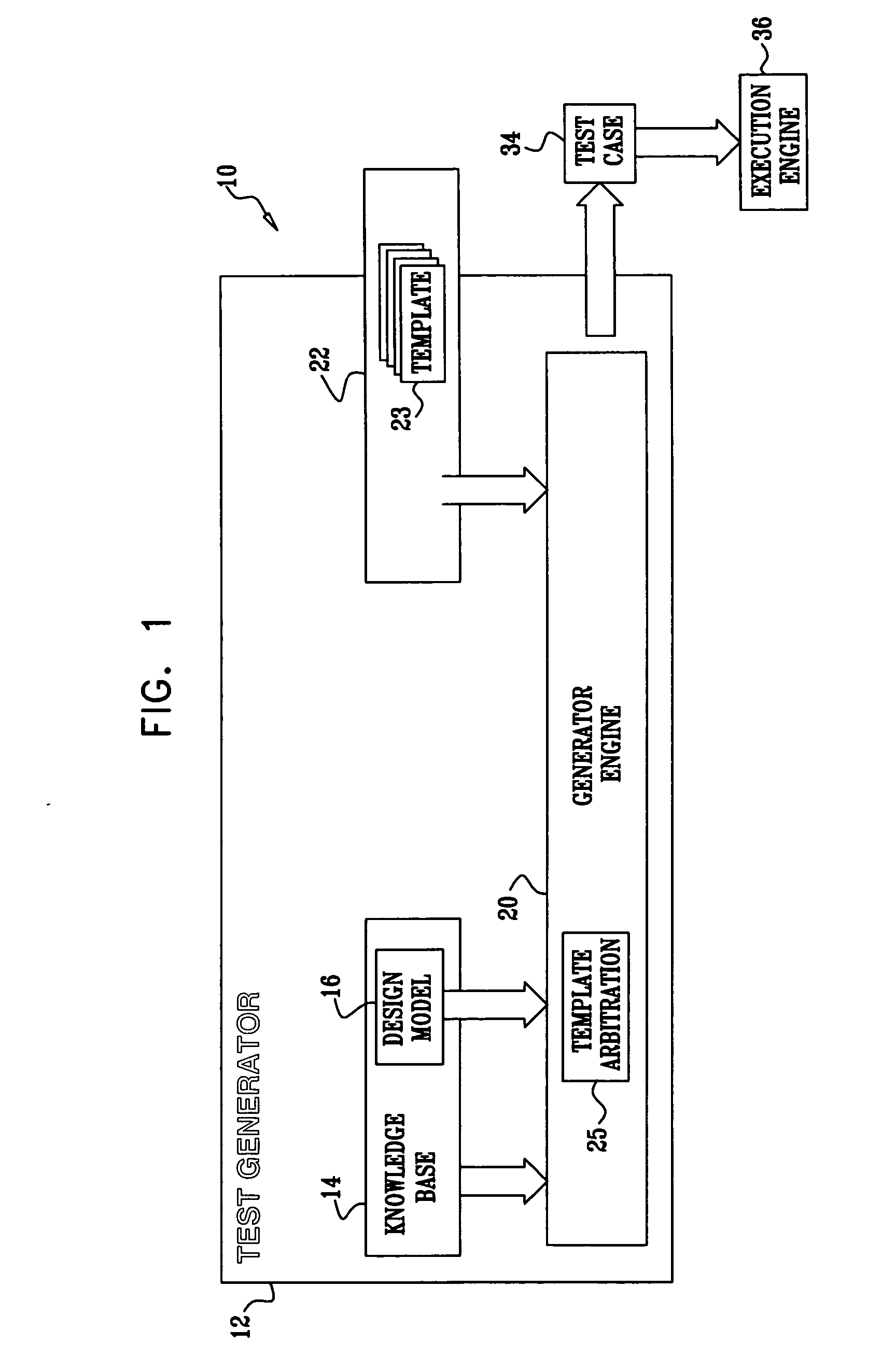Dynamically interleaving randomly generated test-cases for functional verification
a random generation and functional verification technology, applied in the direction of testing circuits, instruments, program control, etc., can solve the problems of time-consuming and laborious development of test templates, and achieve the effect of large investmen
- Summary
- Abstract
- Description
- Claims
- Application Information
AI Technical Summary
Benefits of technology
Problems solved by technology
Method used
Image
Examples
example 1
[0041] For example, consider a multi-processor system with an I / O subsystem—it would be desirable to have a test case that targets cache operations for the processors, and at the same time tests direct memory accesses (DMA) coming from an I / O device.
example 2
[0042] In another example, assume that a computer employing a single processor has been previously verified through the construction of test templates, each directed to particular functions of the design-under-verification. Now a multiprocessor version is to be verified, in which software can selectively disable or enable one or more processors as a function of computational load. It is now necessary to test the processor enable / disable functions in combination with all the other functions of the single processor version. As will be seen from the discussion that follows, according to some aspects of the invention, test templates, which were originally constructed for the single processor version, can be reused and combined with a new template that is directed to the processor enable / disable functions. The old and new templates are interleaved so as to test complex scenarios involving different numbers of operating processors.
[0043] Yet another common requirement is to interleave hi...
example 3
[0073] Reference is now made to FIG. 3, which is a diagram illustrating a simple example of interleaving test templates to produce a test case for a design-under-verification in accordance with a disclosed embodiment of the invention. In this example, there are two templates 66, 68. The template 66 specifies that the test generator 12 (FIG. 1) is to generate instructions that perform 100 CPU-initiated memory accesses. The template 68 specifies the generation of instructions that result in 100 I / O initiated direct memory accesses (DMA). In block 70, representing a random test generator, the templates 66, 68 are interleaved in a random manner that is nevertheless consistent with any constraints imposed by the model 16.
[0074] Alternatively, a relative weight for each of the templates 66, 68 can be assigned. The test generator 12 then generates transactions according to the assigned weight ratios. In general, in order to comply with the assigned weights, transactions corresponding to o...
PUM
 Login to View More
Login to View More Abstract
Description
Claims
Application Information
 Login to View More
Login to View More - R&D
- Intellectual Property
- Life Sciences
- Materials
- Tech Scout
- Unparalleled Data Quality
- Higher Quality Content
- 60% Fewer Hallucinations
Browse by: Latest US Patents, China's latest patents, Technical Efficacy Thesaurus, Application Domain, Technology Topic, Popular Technical Reports.
© 2025 PatSnap. All rights reserved.Legal|Privacy policy|Modern Slavery Act Transparency Statement|Sitemap|About US| Contact US: help@patsnap.com



